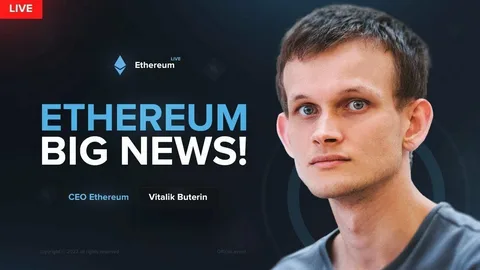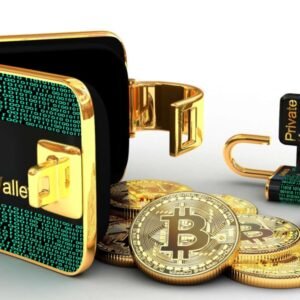Introduction
Cryptocurrencies have emerged as a major technological and economic force over the past decade. At the forefront of this revolution are Ethereum and Vitalik Buterin, both integral in shaping the way we view and interact with blockchain technology.
Alongside Ethereum, a myriad of altcoins has also gained traction, offering diverse features and use cases within the vast crypto ecosystem.
For those looking to navigate this fast-moving landscape, this guide provides insights into it’s role, its development by Vitalik Buterin, the expanding world of altcoins, and some strategic recommendations, including why you might want to accumulate XRP as prices fluctuate.

Ethereum: The Brainchild of Vitalik Buterin
Ethereum is widely regarded as the second most influential cryptocurrency after Bitcoin. While Bitcoin was designed primarily as a decentralized digital currency, it’s vision, led by its co-founder Vitalik Buterin, was much broader. it introduced the concept of a decentralized world computer— a platform that could execute smart contracts and facilitate decentralized applications (dApps) across the globe.
Buterin’s genius lies not only in his technical acumen but also in his ability to foresee how blockchain could be used beyond simple transactions. His brainchild, Ethereum, became the backbone for numerous innovations within the crypto space, including DeFi (Decentralized Finance), NFTs (Non-Fungible Tokens), and decentralized autonomous organizations (DAOs).
Today, it powers thousands of projects and applications, transforming sectors as varied as finance, art, governance, and more.
Ethereum’s growth has been accompanied by notable developments, such as Ethereum 2.0, an upgrade aimed at increasing the scalability, security, and sustainability of the network. But before delving into the intricacies of this platform, it’s essential to understand how Ethereum fits into the larger crypto world and the competitive space of altcoins.
For those exploring the broader market, altcoins offer an expansive horizon of opportunities. Among these, coins like XRP (Ripple) deserve close attention, especially as traders and investors consider whether to accumulate XRP while prices remain volatile.
The Crypto World and Ethereum’s Role in It
The cryptocurrency ecosystem is vast, dynamic, and often overwhelming. From the groundbreaking launch of Bitcoin in 2009, the space has exploded into a multi-trillion-dollar industry, home to thousands of coins, tokens, and decentralized platforms. Ethereum’s contribution to this growth cannot be overstated.
- Smart Contracts and dApps: Ethereum’s smart contract functionality was a game-changer. It allowed developers to create decentralized applications (dApps) on its blockchain. Smart contracts are self-executing agreements with the terms of the contract directly written into lines of code. This eliminated the need for intermediaries, streamlining processes like lending, borrowing, and even complex decentralized governance models.
- Decentralized Finance (DeFi): Ethereum serves as the backbone of the DeFi movement, which aims to revolutionize traditional finance by offering decentralized, peer-to-peer financial services. DeFi platforms built on Ethereum allow users to trade, lend, borrow, and invest without the need for centralized institutions. This has opened financial markets to a global audience and introduced innovative products like yield farming, liquidity mining, and automated market makers (AMMs).
- Non-Fungible Tokens (NFTs): Ethereum also dominates the NFT market. NFTs represent unique digital assets, including artwork, music, and collectibles. By leveraging Ethereum’s blockchain, artists and creators can sell and authenticate their digital creations in a way that ensures ownership and provenance.
Despite Ethereum’s wide-ranging applications and dominant market position, it faces stiff competition from other altcoins, many of which offer specific solutions to some of Ethereum’s limitations, such as high gas fees and scalability issues.
XRP, for instance, presents itself as a strong contender in the realm of cross-border payments, attracting attention for its speed and low transaction costs. As the market evolves, some investors see this as an opportunity to accumulate XRP at favorable prices before potential future price increases.
The Altcoin Landscape: Ethereum and Its Competitors
Ethereum’s dominance within the cryptocurrency space has spurred the creation of numerous other cryptocurrencies, commonly referred to as “altcoins.” Altcoins offer a wide range of functionalities, some of which attempt to solve specific problems in the Ethereum network, while others seek to explore entirely new use cases. Below, we explore some of Ethereum’s key competitors in the altcoin market and how they fit into the broader crypto landscape.
- Cardano (ADA): Founded by Charles Hoskinson, one of Ethereum’s original co-founders, Cardano is a proof-of-stake blockchain platform focused on providing a more secure and scalable alternative to Ethereum. Unlike Ethereum, which began with a proof-of-work consensus mechanism, Cardano was designed from the ground up to utilize proof-of-stake, which is seen as a more energy-efficient and scalable solution. Cardano’s focus on academic peer-reviewed research and its multi-layer architecture give it a strong foundation for future growth, especially in sectors like education and governance.
- Solana (SOL): Solana has gained significant attention due to its promise of high-speed transactions and low fees. Its consensus mechanism, known as Proof of History (PoH), allows it to process thousands of transactions per second, making it an appealing option for decentralized applications and financial services that require high throughput. Solana’s impressive speed and efficiency make it a notable competitor to Ethereum in the NFT and DeFi space.
- Polkadot (DOT): Polkadot was created to address one of the biggest challenges in the blockchain industry—interoperability. Its multi-chain framework allows different blockchains to operate together, sharing data and value in a seamless manner. Ethereum, by contrast, operates primarily as a standalone platform. Polkadot’s goal is to create an internet of blockchains, where various chains can connect and share information.
- XRP (Ripple): XRP stands out for its focus on solving a critical problem in the financial world—cross-border payments. Ripple, the company behind XRP, has established partnerships with banks and financial institutions, aiming to create a fast, low-cost solution for sending money across borders. With XRP’s potential to replace traditional systems like SWIFT, the altcoin has gained significant interest from institutional investors. Given the potential for wide adoption in the traditional financial sector, many crypto enthusiasts suggest it’s wise to accumulate XRP while prices remain relatively low, as future partnerships and regulatory clarity could drive demand.
As Ethereum continues to evolve, it faces increasing competition from these altcoins. However, it remains at the forefront of blockchain development due to its large community, extensive developer support, and innovative projects being built on its network.
Recommendations for Crypto Investors
For those navigating the cryptocurrency space, the options can feel overwhelming. However, understanding the dynamics between major players like Ethereum and emerging altcoins can provide valuable insight into where to allocate investments. Below are some strategic recommendations to consider as you venture into the world of crypto investments.
- Diversify Across Platforms: Ethereum has proven its longevity and relevance, making it a cornerstone of many crypto portfolios. However, altcoins like Solana, Cardano, and Polkadot offer exposure to potentially faster growth rates due to their specific focus on scalability, interoperability, and speed. Diversifying across these platforms can help reduce risk while allowing you to benefit from different areas of innovation within the blockchain space.
- Accumulate XRP During Market Dips: While XRP is often seen as a more specialized altcoin focusing on cross-border payments, its potential in the traditional financial sector should not be underestimated. Ripple’s partnerships with major financial institutions give XRP a unique use case in the crypto world. As the market fluctuates, XRP prices can offer entry points for investors looking to accumulate XRP before broader adoption pushes prices higher.
- Stay Informed About Regulatory Developments: One of the biggest uncertainties facing the crypto world is regulation. Governments worldwide are grappling with how to regulate cryptocurrencies, and any changes in regulation can significantly affect prices. Ethereum’s shift to Ethereum 2.0 and XRP’s ongoing legal battles with the SEC (Securities and Exchange Commission) are just a few examples of how regulation can impact the crypto landscape. Staying informed about these developments can help you make more informed investment decisions.
- Focus on Long-Term Trends: The crypto market is notoriously volatile, with prices swinging wildly in short periods. However, the long-term trends show a steady increase in adoption, institutional interest, and technological innovation. Instead of reacting to short-term price movements, focus on the long-term potential of the platforms and projects you believe in. Ethereum’s continued upgrades and XRP’s potential within the traditional finance sector are examples of projects with long-term viability.
Conclusion: The Future of Ethereum, Altcoins, and Your Investment Strategy
The cryptocurrency world is evolving rapidly, and Ethereum, with the vision of Vitalik Buterin, continues to lead the charge. However, the growing ecosystem of altcoins is pushing innovation further, offering solutions to problems like scalability, interoperability, and transaction costs. For investors, this provides a wealth of opportunities to participate in the future of finance, decentralized technology, and more.
As you explore this space, consider diversifying your investments to include both established platforms like Ethereum and promising altcoins like Solana, Cardano, and XRP. With XRP’s unique position in cross-border payments, many traders believe that now is the time to accumulate XRP, especially as prices remain favorable.
Have thoughts on the future of Ethereum or altcoins? Leave a comment below and share your predictions on where the crypto world is headed! We’d love to hear your insights and discuss strategies for thriving in this dynamic and fast-changing market.






